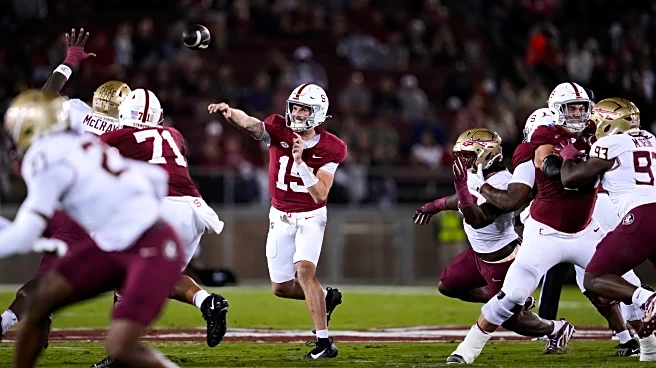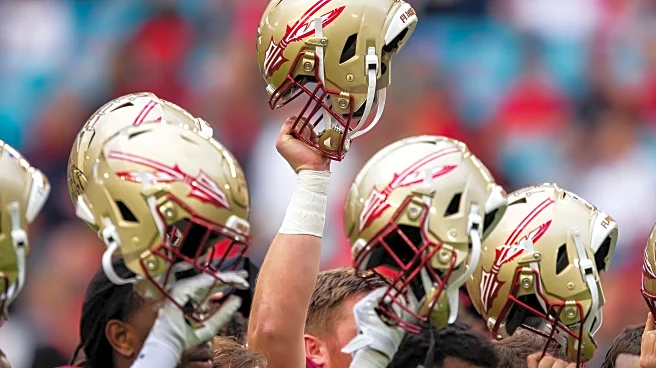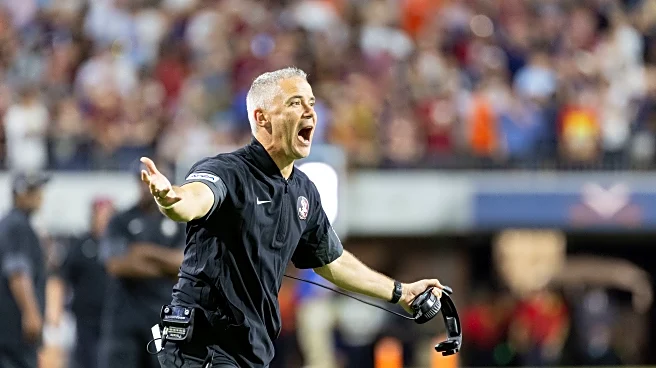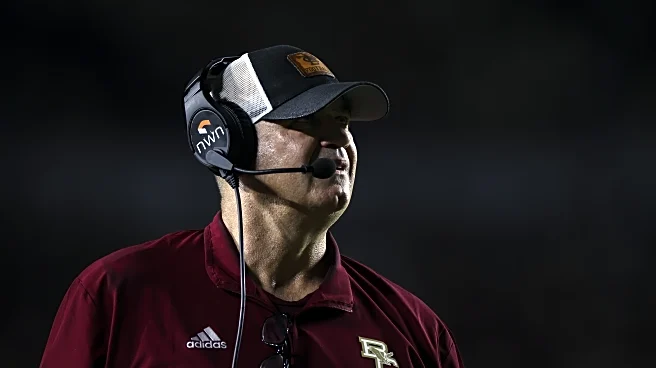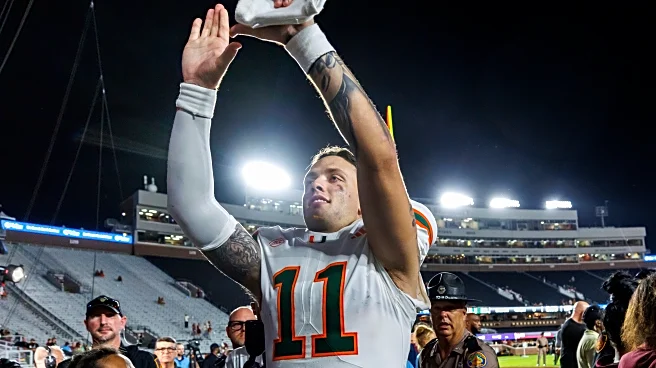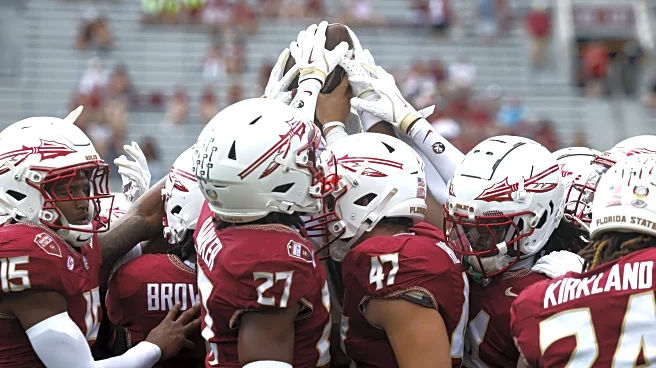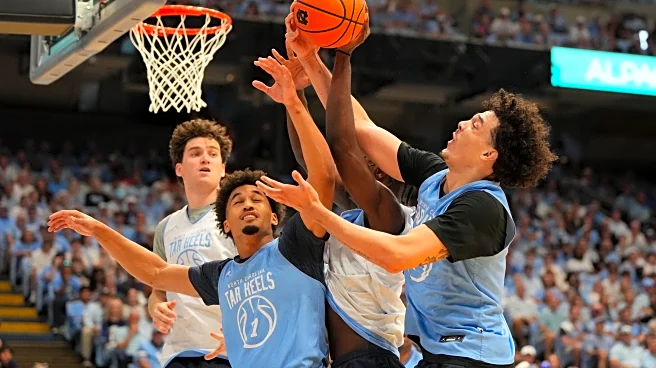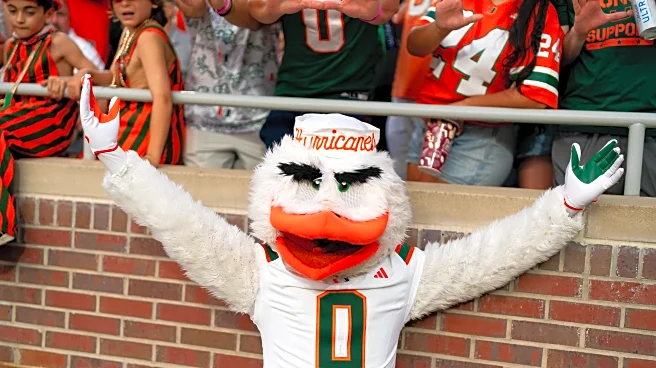What's Happening?
The Florida State Seminoles faced the Stanford Cardinal at Stanford Stadium in California, marking the first-ever meeting between the two teams. The game, held on October 18th, ended with Stanford defeating
Florida State 20-13. Florida State entered the game with a 3-3 record, having lost three consecutive Atlantic Coast Conference games. The Seminoles, led by head coach Mike Norvell, have struggled in conference play, failing to secure a win since September 20th. Stanford, under interim head coach Frank Reich, improved their record to 2-4, with a notable 2-0 home record. The Cardinal's victory against Florida State marks their attempt to start a season 3-0 at home for the first time since 2018.
Why It's Important?
This game holds significance as it represents the first meeting between Florida State and Stanford, highlighting the expansion of inter-conference play. For Florida State, the loss continues their challenging season, impacting their standing in the ACC and their prospects for postseason play. Stanford's victory at home strengthens their position and morale, potentially boosting their performance in upcoming games. The outcome of this game may influence coaching strategies and team dynamics for both teams as they navigate the remainder of the season.
What's Next?
Following the game against Stanford, Florida State will have a bye week before hosting Wake Forest at Doak Campbell Stadium in Tallahassee, Florida, on November 1st. The Seminoles will aim to regroup and address their recent losses in conference play. Stanford will look to build on their home success as they continue their season, with the potential to extend their home winning streak. Both teams will likely reassess their strategies and player performances in preparation for their upcoming matches.
Beyond the Headlines
The game between Florida State and Stanford underscores the evolving landscape of college football, where traditional conference boundaries are increasingly crossed for competitive matchups. This trend may lead to more diverse and challenging schedules for teams, impacting recruitment, fan engagement, and media coverage. The strategic decisions made by both teams in this game could influence future inter-conference games and the broader dynamics of college football.



